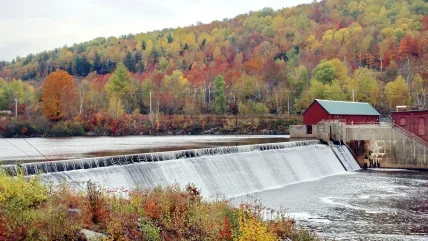
“I’ve worked in the power industry for more than 20 years,” says Rajeev Raina, Director and Team Manager for India at Entura. “Throughout that time, I have felt a great sense of pride and satisfaction from helping to bring communities the quality-of-life benefits and economic advantages of electricity while also creating a more sustainable, low-emissions future. The transition to renewables is such a historic, fundamental shift, and we’re at a very exciting point in the journey.
“Wherever wind and solar are booming, hydropower has a huge role to play in balancing the ‘energy trilemma’ to deliver affordable, reliable, sustainable energy. It’s exciting to see the sector starting to recognise and embrace the diverse and complementary roles that hydropower can play as we transition to more wind and solar power in electricity networks – from baseload power generation to flexible generation on demand, storage, quick start capacity and rapid ramping.
“A great example of hydropower’s ability to bring stability to the grid was the April 2020 incident when India was encouraged to turn off the lights at 9pm for nine minutes and turn on torches and lanterns to show support to pandemic health workers. In those nine minutes, system demand dropped suddenly by a staggering 31GW – which is a quarter of the total load on the system at that time, and far greater than had been expected. As it was night, there was no solar output, yet there was wind generation in the system, and of course, thermal, which cannot ramp up or down rapidly. The flexibility of hydropower was what enabled a rapid reduction in supply and a rapid ramp back up to meet demand once the lights were turned back on. Without this flexibility, the grid could have gone down and taken many days to restore. This example may be dramatic, but it isn’t an isolated event. In 2012, hydropower played a critical role in a previous major power system event in India, bringing the grid back to life after the nation’s biggest power failure.
“In my career, I’ve seen that viable opportunities, enthusiasm, government incentives and subsidies, and policy certainty are important factors in the success of new renewable developments, but another critical factor is reliable expertise, which may be less available to proponents of hydropower projects if they are new to the hydropower sector. It’s this expertise that can guide a project through the many potential challenges we’ve seen projects encounter: approvals, land acquisition, environmental issues, geology, technical challenges in design and construction, financing and so on. These challenges can be considerable, but it is always very satisfying to help clients navigate through them and achieve success.
“I think it is also very important that we don’t see hydropower development as ‘build, set and forget’. Our teams conduct dam safety inspections, reviews and training to make sure that hydropower dams are not only built safe but also stay safe throughout their operational lives, which is vital to the safety and wellbeing of communities in all our regions. Our team played a key role in drafting new dam safety guidelines to form part of the Laos Electrical Power Technical Standards after the dam safety incidents experienced in 2018, and we’ve actively participated in dam safety initiatives for the Central Water Commission in India. We also strengthen communities with flood management and emergency planning.”
Entura has worked on numerous hydropower projects in South Asia and South-East Asia. These include the 19.2MW run-of-river Nam Pha Gnai Hydropower Project in the Nam Ngum river basin in Vientiane Province, Laos.
Commissioned in 2019 the scheme has a 70m concrete gravity dam, 1.2m headrace tunnel, 5.1km channel, forebay, 280m surface penstock and three Francis turbines housed in a surface powerhouse. Entura was awarded a contract for Owner’s Engineer services in 2014
In its work on this project, Entura says it made very high priorities of protecting the natural environment, avoiding adverse social impacts, and ensuring sustainability into the future. To reduce excavation and concrete, it used an arch profile for the dam, sloped the foundation level upstream, provided a cantilever crest upstream, and used an unconventional gate structure. These were important contributions to minimising the environmental footprint of the project.
The project also adds to the potential for Laos to become the hydropower ‘battery of South-East Asia’, bringing power to the people, economic benefits to the country and contributing towards the nation’s climate change commitments. It is also donating to local authorities to support construction of a local school.






